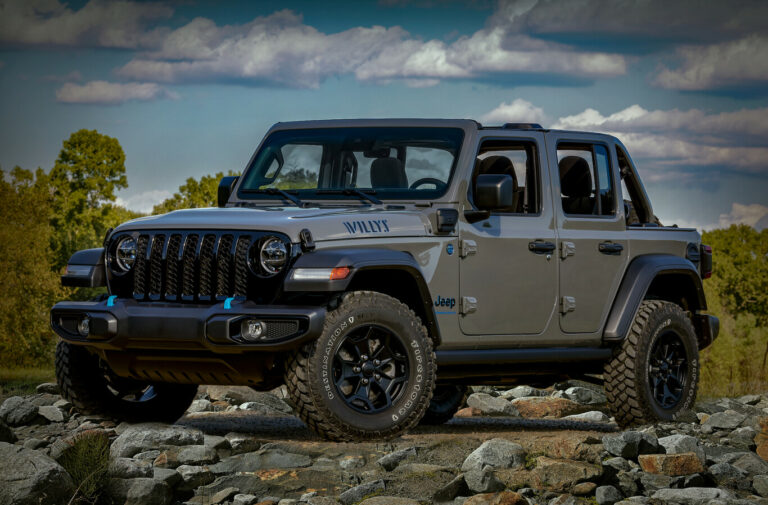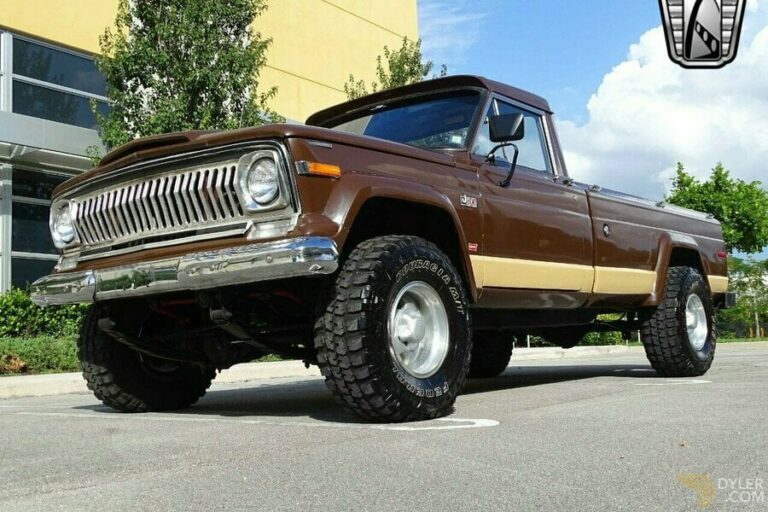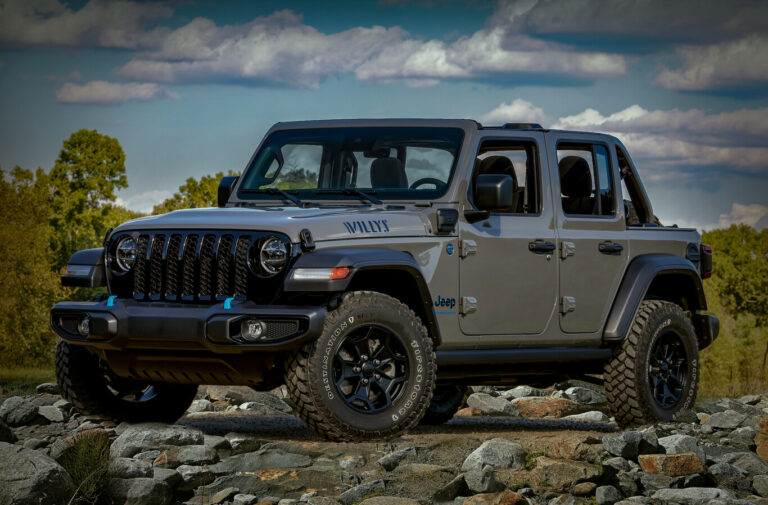1984 Jeep Scrambler For Sale: Your Comprehensive Buyer’s Guide
1984 Jeep Scrambler For Sale: Your Comprehensive Buyer’s Guide jeeps.truckstrend.com
The 1984 Jeep Scrambler, officially known as the CJ-8, stands as a unique and increasingly sought-after icon in the classic SUV market. More than just a utility vehicle, it represents a blend of rugged capability, open-air freedom, and a distinctive long-wheelbase design that sets it apart from its CJ-7 brethren. For enthusiasts and collectors alike, finding a 1984 Jeep Scrambler for sale isn’t just about acquiring a vehicle; it’s about investing in a piece of automotive history that promises adventure, character, and a continually appreciating value. This comprehensive guide will navigate you through everything you need to know when considering one of these rare gems.
The Allure of the 1984 Jeep Scrambler
1984 Jeep Scrambler For Sale: Your Comprehensive Buyer’s Guide
The Jeep Scrambler (CJ-8) was produced from 1981 to 1986, with the 1984 model year representing a mature iteration of its design and mechanical offerings. What makes the Scrambler so appealing? Its primary distinction is its extended 103.5-inch wheelbase, which is 10 inches longer than the CJ-7, providing more cargo space and a smoother ride. This extra length made it ideal for camping, hauling gear, or even serving as a compact pickup truck, especially with the optional half-cab.
Beyond its utility, the Scrambler embodies the classic Jeep spirit: removable doors, a fold-down windshield, and open-top driving. Its rugged, utilitarian aesthetic is timeless, and its relatively low production numbers (especially compared to the CJ-7) contribute significantly to its rarity and desirability today. A 1984 model often comes with the venerable 4.2L (258 cubic inch) inline-six engine, known for its torque and durability, making it a capable off-roader and a reliable vintage driver.
What to Look For When Buying a 1984 Jeep Scrambler
Purchasing a vintage vehicle like the 1984 Scrambler requires a keen eye and a thorough inspection. Here’s a detailed breakdown of what to prioritize:
Engine and Drivetrain Options: Powering Your Adventure
The 1984 Scrambler was primarily offered with two engine choices:
- 2.5L (150 cubic inch) AMC I4: While less common and somewhat underpowered for the Scrambler’s size, it offers better fuel economy.
- 4.2L (258 cubic inch) AMC I6: This is the most common and desirable engine. Known for its robust torque and legendary reliability, it’s the workhorse of the CJ line.

Inspection Points:
- Engine: Check for oil leaks, unusual noises (knocks, ticks), and smoke from the exhaust. Ensure proper maintenance records if available. Look for signs of neglect or poorly executed modifications.
- Transmission: Manual options included the T-4, T-5, and the heavy-duty T-176. An automatic (TF-999) was also available. Test all gears, listen for grinding, and check for smooth engagement.
- Transfer Case: The standard was the Dana 300, a strong and reliable part-time 4WD unit. Engage 4-high and 4-low to ensure it shifts smoothly and the 4WD light illuminates.
- Axles: Typically, a Dana 30 front and AMC 20 rear. Check for differential leaks and excessive play in the U-joints.

Body and Frame Condition: A Critical Assessment

Rust is the archenemy of any vintage Jeep, and the Scrambler is no exception. Its longevity hinges significantly on the integrity of its frame and body.
Key Rust-Prone Areas:
- Frame: Pay close attention to the frame rails, especially near the spring hangers, skid plates, and behind the rear wheels. Look for cracks, excessive pitting, or amateur patch jobs.
- Body Tub: The floorboards, rocker panels, cowl area (especially under the windshield), and the rear cargo bed are notorious rust traps. Check under any bed liners.
- Fenders and Doors: Rust often appears around the wheel wells and at the bottom edges of the doors.
- Roll Bar Mounts: Ensure the roll bar is securely mounted and the surrounding metal isn’t compromised.
Practical Advice: Bring a small hammer or a screwdriver to gently tap on suspicious areas. A solid thud indicates good metal, while a dull thud or crunch might signal rust. Check body mounts for deterioration.
Interior and Electrical Systems: Comfort and Functionality
While Scrambler interiors are Spartan, their condition reflects how the vehicle has been cared for.
- Seats: Check for tears, worn-out foam, and functionality of seat adjusters.
- Dashboard: Look for cracks, especially around the gauges. Ensure all gauges (speedometer, odometer, fuel, temp, oil pressure, voltage) are working.
- Electricals: Test all lights (headlights, tail lights, turn signals, brake lights), wipers, horn, heater/blower motor, and any aftermarket accessories. Wiring harnesses can degrade over time, leading to intermittent issues.
- Soft Top/Hard Top: If present, inspect for tears, cloudy windows, and proper fitment. For hardtops, check for cracks and seal integrity.
Modifications and Aftermarket Upgrades: A Double-Edged Sword
Many Scramblers have been modified, ranging from simple lift kits to full engine swaps. While some modifications enhance performance or aesthetics, others can detract from value or indicate underlying issues.
- Lifts and Suspension: Check the quality of the lift kit components. Look for signs of proper installation: correct driveline angles, no binding, and appropriate shock lengths.
- Engine Swaps: A common upgrade, but ensure the swap was professionally done and legal in your state. Verify cooling system adequacy and electrical integration.
- Aftermarket Accessories: Winches, bumpers, larger tires – assess their condition and how they affect the vehicle’s handling and safety.
- Originality: Highly original, unmolested Scramblers generally command a higher price. If originality is a priority, be wary of extensive modifications.
The Buying Process: Tips for a Smooth Transaction
- Research the Market: Understand current pricing trends based on condition, mileage, and originality.
- Where to Look: Online marketplaces (eBay, Bring a Trailer, Hemmings, dedicated Jeep forums, Facebook Marketplace), classic car dealerships, and auctions are common venues.
- Pre-Purchase Inspection (PPI): This is non-negotiable. Have a trusted mechanic specializing in vintage Jeeps or 4x4s inspect the vehicle thoroughly. A PPI can uncover hidden issues and give you leverage in negotiations.
- Test Drive: Drive the Scrambler on various surfaces – highway, city, and if possible, some mild off-road terrain. Listen for strange noises, feel for vibrations, and assess braking performance.
- Documentation: Request all available service records, ownership history, and a clear title. Verify the VIN matches the title and the vehicle.
- Negotiation: Based on your inspection and market research, be prepared to negotiate the price. Point out any deficiencies found during the PPI.
Restoration vs. Driver Quality: Deciding Your Path
When considering a 1984 Jeep Scrambler for sale, you’ll generally encounter vehicles in a few categories:
- Project/Parts Vehicle: Often non-running, heavily rusted, or incomplete. These are for experienced restorers or those seeking parts for another project. Lowest entry price, highest restoration cost.
- Driver Quality: Runs and drives reliably, but has cosmetic flaws, some rust, or needs mechanical attention. These are great for someone who wants to enjoy the Scrambler immediately and improve it over time.
- Well-Maintained/Lightly Restored: Good to excellent condition, minimal rust, reliable mechanics, and presentable appearance. These are often ready to enjoy with little immediate work.
- Concours/Frame-Off Restored: Near-perfect condition, often rebuilt from the ground up to original specifications or with high-quality custom work. These command the highest prices and are often show vehicles.
Your choice depends on your budget, mechanical aptitude, and desired use. A driver-quality Scrambler offers a balance of affordability and enjoyment, while a fully restored one is a significant investment.
Maintaining Your Vintage Scrambler
Owning a vintage Jeep is a commitment. Regular maintenance is crucial. Parts availability for CJ-series Jeeps is generally good due to their popularity, with many aftermarket suppliers offering reproduction and upgraded components. Familiarize yourself with basic maintenance tasks like oil changes, fluid checks, and greasing U-joints. Joining online forums or local Jeep clubs can provide invaluable resources for advice, parts, and experienced mechanics.
1984 Jeep Scrambler For Sale: Estimated Price Guide
The price of a 1984 Jeep Scrambler can vary dramatically based on its condition, originality, mileage, location, and the current market demand. This table provides a general estimate:
| Condition Category | Estimated Price Range (USD) | Key Characteristics & Considerations |
|---|---|---|
| Project / Parts Vehicle | $5,000 – $12,000 | Significant rust (frame/body), non-running, missing major components, or extensive mechanical issues. Requires a full frame-off restoration or is suitable for parts. Highest restoration cost. |
| Driver Quality | $15,000 – $35,000 | Runs and drives reliably, but has noticeable cosmetic flaws (dents, scratches, minor rust), worn interior, or needs some mechanical sorting. Enjoyable immediately, but expect ongoing investment for improvements. |
| Well-Maintained / Lightly Restored | $35,000 – $55,000 | Good to very good condition. Minimal rust, solid frame, presentable paint and interior. Mechanically sound, may have had some recent work or minor upgrades. Ready to enjoy with little immediate work. Represents good value for a clean example. |
| Concours / Frame-Off Restored | $60,000 – $100,000+ | Excellent to show-quality condition. Often a full, professional frame-off restoration. Near-perfect paint, interior, and mechanicals. Either highly original or professionally modified with top-tier components. For collectors and serious enthusiasts. |
Factors Influencing Price:
- Engine: The 4.2L I6 generally commands a higher price than the 2.5L I4.
- Transmission: Original manual transmissions are often preferred.
- Originality: Unmodified, original examples are increasingly rare and valuable.
- Rust: The presence and extent of rust are the biggest price determinants. Less rust = higher value.
- Documentation: Comprehensive service records and ownership history add value.
- Location: Prices can vary regionally based on demand and climate (e.g., rust-free states often have higher prices).
- Aftermarket Upgrades: High-quality, desirable modifications can increase value, but poorly done or extreme mods can decrease it.
Frequently Asked Questions (FAQ) about the 1984 Jeep Scrambler
Q1: Is the 1984 Jeep Scrambler a good daily driver?
A1: While possible, it’s generally not ideal for modern daily driving due to its vintage characteristics (lack of modern safety features, less comfortable ride, lower fuel economy). It excels as a weekend cruiser, off-road vehicle, or a fair-weather utility vehicle.
Q2: Are parts hard to find for a 1984 Scrambler?
A2: No, parts availability is generally very good. The CJ-7 and CJ-8 share many components, and the aftermarket supports these models extensively with both OEM-style replacement parts and performance upgrades.
Q3: What’s the biggest issue to watch out for when buying a Scrambler?
A3: Rust, particularly in the frame and body tub, is by far the most critical issue. Rust repair can be extremely costly and time-consuming, often exceeding the vehicle’s initial purchase price if severe.
Q4: How much can I expect to spend on insurance for a vintage Scrambler?
A4: Insurance costs vary widely based on your location, driving record, and chosen coverage. Many owners opt for classic car insurance, which can be more affordable than standard auto insurance, especially if the vehicle isn’t a daily driver and has limited annual mileage.
Q5: Can I put a modern engine in a 1984 Scrambler?
A5: Yes, engine swaps are common, with popular choices including modern Jeep 4.0L inline-sixes, V8s (like GM LS engines), or diesel engines. However, these require significant mechanical work, often involving new transmissions, transfer cases, and electrical systems. Ensure any swap is done professionally and complies with local emissions and registration laws.
Q6: What’s the difference between a CJ-7 and a CJ-8 Scrambler?
A6: The primary difference is the wheelbase. The CJ-7 has a 93.5-inch wheelbase, while the CJ-8 Scrambler has a longer 103.5-inch wheelbase. This extra length provides more cargo space and a slightly smoother ride in the Scrambler.
Conclusion
The 1984 Jeep Scrambler stands as a testament to classic American utility and rugged individualism. Its distinctive long-wheelbase design, coupled with its legendary Jeep capabilities, makes it a highly desirable vehicle for collectors, off-road enthusiasts, and anyone seeking a unique piece of automotive history. While purchasing one requires careful inspection, particularly for rust and mechanical integrity, the rewards of owning and driving a Scrambler are immense. With proper research, a thorough pre-purchase inspection, and a clear understanding of your budget and intentions, you can confidently find a 1984 Jeep Scrambler for sale that will bring years of adventure and a true sense of open-air freedom.






